This is a follow-up to my July 18, 2019 article entitled “CHL and Canadian Players Drafted Hits 10-Year Low”.The piece reviewed the NHL Draft results over the last 10 years (2010-19) for six countries that traditionally dominate international hockey. Additionally, it examined the success of the countries in the IIHF U-18 and U-20 World Championships over the same period.
I promised to study and share the critical components of the six country’s player development models. Some countries are enjoying recent success in international competition and at the NHL Draft table, while others seem to be moving in the wrong direction. I chose to wait until the conclusion of the 2019 Hlinka Gretzky Cup to write this article so I could include the results of the U-18 tournament in my assessment.
This article will be part one of a two-part series focusing on the Canadian, USA and Swedish player development models. Let’s take a look at what models are getting the desired results and those that need to rethink their player development strategy.
Canada’s Model
Hockey Canada supports a national team high-performance model that believes in inviting players to brief off-season camps for player assessment and team selection. For example, to prepare for the IIHF U-20 World Junior Championship each year, Canada participates in the World Junior Summer Showcase in July / August and concludes its preparation and selection process with the final camp in early December. The majority of players selected are 19-year-olds from the CHL, with a small number of NCAA players rounding out the roster. The U-18 high-performance men’s program follows a similar model, with rosters made up almost exclusively of CHL players.
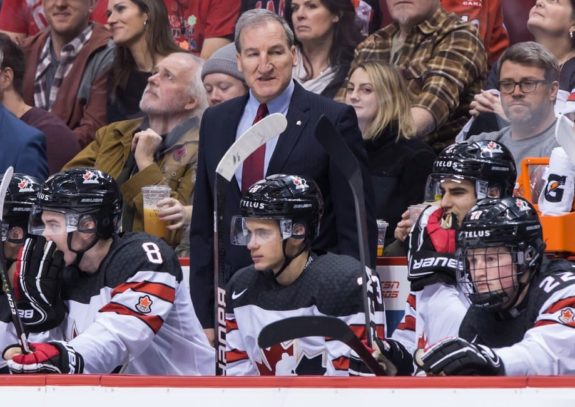
Hockey Canada hopes that each team representing Canada on the international stage will become a cohesive group in a short time, despite the fact that most players compete on different teams and in different leagues and they are unfamiliar with the coaching staff. The majority of players selected compete against players their own age and younger players during the CHL regular season. The NCAA players selected play against players aged 18-24 years during their regular season.
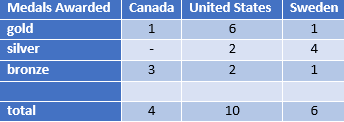
In the last 10 years, the Canadian model has produced only four medals, including one gold and three bronze, at the IIHF U-18 World Championships. Their U-20 teams competing in the IIHF U-20 World Junior Championships have enjoyed more success with a total of six medals in the last 10 years – two gold, three silver, and one bronze. However, Canada’s performance over the last four years has been disappointing as they finished sixth in both 2016 and 2019.
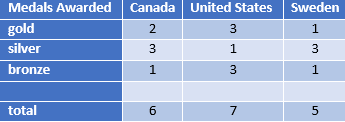
At the recent U-18 Hlinka Gretzky Cup, Canada managed to win a silver medal, losing 3-2 to Russia, despite outshooting the Russians 37-13. The Canadian roster was composed entirely of CHL players and had the fewest 16-year-old players in the tournament with three. Canada considers the Hlinka Gretzky Cup a marquee tournament for their U-18 program because their best U-18 players are available. The timing of the IIHF U-18 World Championships in April conflicts with the CHL playoffs; therefore some elite players are unavailable to play.

In this year’s NHL draft, 70 Canadians were selected over the seven rounds. That was the lowest number recorded over the last 10 years and 30 percent lower than the 100 Canadian players chosen in both the 2012 and 2013 Drafts. As a league, the CHL produced 71 picks this year which was also its lowest number of drafted prospects in the last 10 years. That number was 35 percent lower than the 108 CHL players selected in the 2010 Draft.
USA’s Model
The American Development Model (ADM) and the US National Team Development Program (USNTDP) are the foundation of the USA player development model and their high-performance teams. The USNTDP started in 1996 at a time when USA Hockey was not growing and was facing a participation dilemma, as naturally gifted American athletes were choosing to play other sports rather than hockey.
ADM became the player development model for minor hockey to help support elite player advancement into the USNTDP. According to the ADM website, “The ADM is USA Hockey’s nationwide player-development program for youth hockey associations. It’s based on age-appropriate, age-specific competition and training for boys and girls, beginning with their first steps onto the ice and carrying them through age 18 and beyond. The ADM places a heightened emphasis on skill development and long-term athlete development principles, providing a blueprint for the best possible youth hockey experience. Put simply; it’s doing what’s best for kids.”
During an August 22, 2019 interview with Bob Mancini, regional manager for the ADM, he made it very clear that the recent success of their development model was in large part due to the many people that rarely receive the credit they deserve. “The gratitude that needs to go down the line is important. We are a volunteer organization that hopes to light the fire and drive the passion, for hockey participation in the US. A genuine thanks are deserved for all of our volunteers and volunteer coaches at the grassroots level. They are an important part of the success of USA Hockey,” explained Mancini.
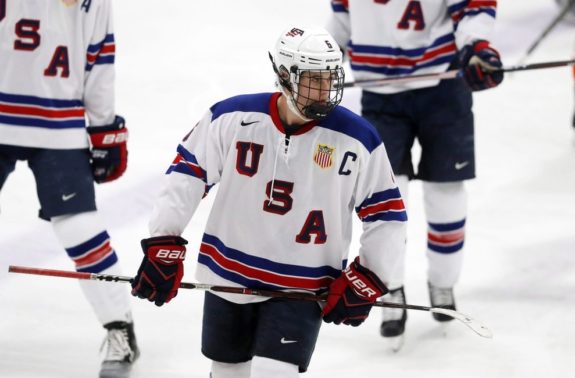
The USNTDP includes two high-performance teams that consist of 24 players each who remain together the entire season. The U-17 Team includes the country’s best 16-year-olds who play against older U-21 USHL teams. The U-18 Team roster includes the country’s best 17-year-old players. They play a schedule split between U-21 USHL teams and NCAA that ice teams in the 18-24 age group.
The focus of the USNTDP is individual player development both on and off the ice. The players are required to reside in Plymouth, Michigan, the home of the NTDP training centre and headquarters. They board with local billet families, attend school together, and train as a team on and off the ice. According to the USNDTP website, “Unlike other competitive athletic teams, the success of the NTDP is not gauged on wins and losses. Instead, the focus is on the development of skills and acquiring experience against older competitors.”
When asked about how the program gauges their success Mancini replied, “We gauge our success by draft picks, by medals, by international success. What is not talked about enough is the effect we have on junior hockey in the United States, and our participation numbers for U-14, U-16, U-18 hockey. There has been a huge upsurge in the development of hockey programming across the United States.”
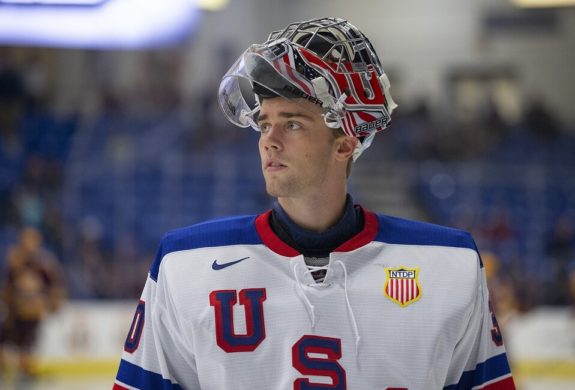
Success at the international level has become a common for the Americans. The U-18 Team has won a medal in each of the last 10 IIHF U-18 World Championships, including six golds. The USA also has an impressive track record at the IIHF U-20 World Junior Championships. They have amassed seven medals in the last 10 years, including three gold, one silver, and three bronze medals. The majority of players who suit up for the U-20 USA World Junior squad are graduates of the USNTDP.
The Hlinka Gretzky Cup is not a priority for USA Hockey. This year they sent a U-18 squad that did not include a player from either the USNTDP U-17 or U-18 teams. They chose to ice a team consisting of 17 players aged 17 and five 16-year-old underage players. The USA finished sixth in the tournament.
The most impressive recent performance by the USNTDP was at this year’s NHL Draft, led by first overall pick Jack Hughes. From a roster of 24 players from the 2018-19 season, 17 players (71%) were selected by NHL teams from the USNTDP U-18 Team. That is the highest number of players selected from one team in one draft in NHL history. The previous record was 13 players chosen from both the 2006 and 2007 USNTDP U-18 teams.
Eight players from the U-18 Team were selected in the first round. That is a record number of first-rounders picked from one team in the NHL Draft. The previous high for first-round picks in a single draft selected from the U-18 Team was three. This year’s draft saw 56 Americans selected, which is in line with the average of 55 players selected over the last 10 years.
When Mancini was asked to reflect on the progress of the ADM and USNTDP he said, “We were a little bit in awe of where some of the other countries were in terms of their player development models. We chose to incorporate some of their best ideas; however, we wanted the components of our program to be very American. With the start of the USNTDP and subsequently the ADM, we have become one of the driving forces of hockey development in the world. We are very proud of our accomplishments.”
Sweden’s Model
In 2003, the Swedish Junior Hockey program was in disarray. Instead of competing for a medal at the IIHF U-20 World Junior Championships, Sweden was fighting for their lives in the tournament’s relegation round. According to Thommie Bergman, a Toronto Maple Leafs European scout at the time, “It is sad, but the Swedish juniors are not competitive anymore. The players don’t have the ability to compete at the highest level, and the junior national team is behind Slovakia and Switzerland, not to mention the top four. If nothing happens, it could be a matter of time before the U20 is relegated to Division I.”
The Swedish Ice Hockey Association realized they had reached a tipping point in their efforts to develop players and regain their competitiveness at the international level. The result was a ‘revolution’ in Swedish hockey circles. In 2003, Tommy Boustedt, a former coach at the professional club level in Sweden, was appointed the Director of Youth Development within the Swedish Ice Hockey Association.
The same year, Boustedt initiated a Commission of Inquiry on junior hockey in Sweden. “We took an honest and thorough look at the state of our development,” said Boustedt. “You could compare it with the hockey summit that Hockey Canada organized years earlier when they had problems in major international competition. Part of the inquiry was a summit meeting with 120 people, junior coaches, club executives and also Swedish NHL scouts. We held workshops, everyone was asked to speak their minds, and the process generated 100 proposals submitted on how to improve junior hockey in Sweden. We formulated a five-year plan and pledged to implement the 100 improvement proposal within this period.”
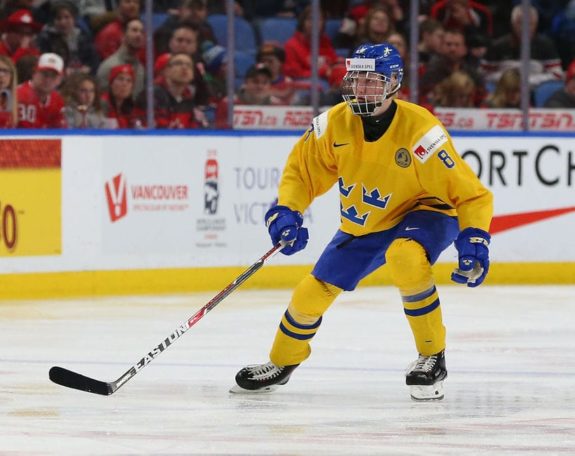
The result was a player development model that emphasizes skill development during practices rather than team play. Young elite players attend skill practices before school and team practices later in the day. Minor league players practice and play in a cross-ice setting to enhance early skill development.
The best U-20 players (16-17-18-19-year-olds) are encouraged to play in the two top professional leagues in Sweden: the SHL and Allvenskan. Junior age players are permitted to move freely between their junior teams and the professional leagues during the season. This model means young elite players will develop faster because they have the opportunity to practice with, and play against, more mature, skilled professional players. A recent example of the commitment that Swedish Hockey is making to player development involved their two top 17-year-old prospects, Alexander Holtz and Lucas Raymond. They were selected to play on Sweden’s U-20 Team that competed in the World Junior Summer Showcase rather than the U-18 Hlinka Gretzky Cup.
The model has resulted in their Swedish National Teams always being considered a legitimate contender. At the U-18 IIHF World Championships, they have won a total of six medals over the last 10 years, including a gold in this year’s tournament. It was Sweden’s first gold medal since the tournament started in 1999. At the U-20 IIHF World Junior Championships, they have won a total of five medals, including one gold in 2012.
At this year’s U-18 Hlinka Gretzky Cup, Team Sweden managed to win a bronze medal, without Holtz and Raymond. Their roster did not include a CHL player, as they chose to ice a roster dominated by 18 players aged 17 and only four 16-year-old underage players.
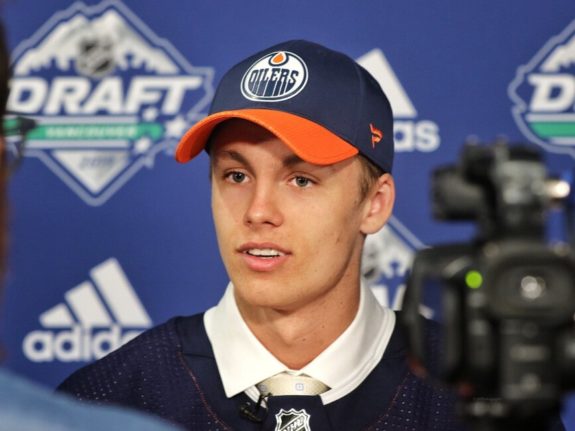
The 2019 NHL Draft saw 26 Swedes selected, including the 8th overall pick Philip Broberg. That number of picks is slightly higher than the average of 25 Swedes chosen over the last 10 years.
The player development models used by Canada, the USA and Sweden have very different approaches. Canada supports a high-performance program that believes they can enjoy success by bringing players together during the offseason for two short assessment and selection camps. Their U-18 and U-20 teams are highly dependent on CHL players that experience limited competition against older players. Players are expected to better develop by playing more games rather than practicing and engaging in skill development sessions.
In contrast, the USNTDP supports a player development strategy that emphasizes practices over games played. They believe that elite players develop faster if they practice and play with other elite players and compete in games against older, more skilled amateur players. The program supports players spending an entire season with similarly gifted athletes and maturing together as both individuals and team players.
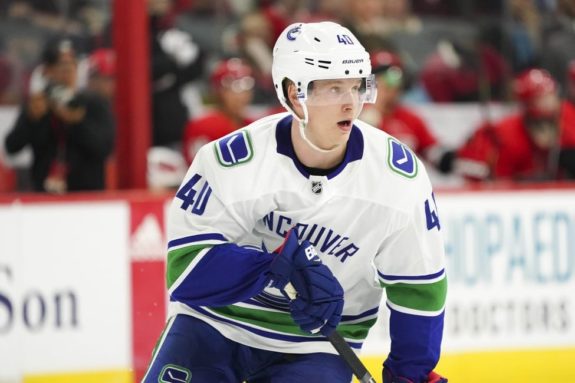
Like the USA, the Swedish Ice Hockey Association believes the key to accelerated player development is competition against older players. Unlike hockey leagues in North American hockey, there are no age restrictions for Swedish junior age players to advance to the professional leagues. Elite players are allowed to play against older, professional players, therefore accelerating their development. The most recent example being Elias Pettersson who was voted the MVP in the Swedish Hockey League after the 2017-18 season as a 19-year-old playing against older professionals.
The real litmus test for country player development models is their performance at the international level and the number of NHL Draft prospects they produce. It appears that the USNTDP model has emerged as a player development leader on the international stage. The Swedes, encouraging their elite players to play professional hockey in Sweden, are making progress with their high-performance teams.
Is Canada’s junior hockey development model broken? (from ‘Is Canada’s junior-hockey development model broken?,’ Times Colonist, 01/05/2019) Canada might need to consider a new model if they want to remain a leader in international hockey player development and increase the success rate of their high-performance teams.
In Part 2, I will do a deep dive into the player development models used in Russia, Finland, and the Czech Republic. Stay tuned.